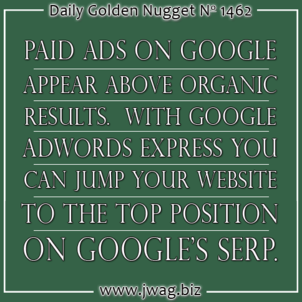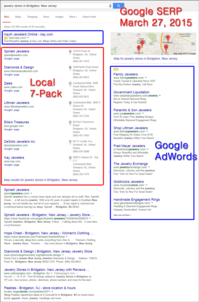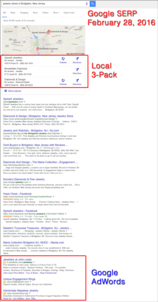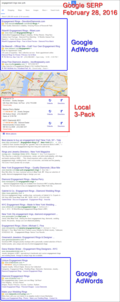
Since the beginning of Google time, their search results page has been formatted as a two column layout. The wider left column showed the organic results and the thinner right column had the paid AdWords ads. Eventually, Google started including paid ads above and below the right column organic results.
Google established their own set of website quality guidelines to explain what you should and should not do on your site. They use an algorithm to measure how well every site follows those guidelines and then organize the organic results according to best to worst. In simple terms, the process of search engine optimization (SEO) is nothing more than comparing your website to those guidelines and trying to do a better job than your competition. When an SEO agency claims they can get you into "position 1" on Google, they are claiming that they can somehow optimize your website better than anyone else. Those claims are impossible and even Google warns against hiring someone who guarantees such.
On the other hand, the organization of the ads in the right column had always been determined by whoever is willing to pay the most money. Because Google AdWords operates as an auction system, the ad results you see are usually organized by highest to lowest bidder. Google also ranks ads according to a quality score that indicates the likelihood of being clicked on. Google makes more money on lower paying ads that get clicked more often than high paying ads that are clicked rarely.
SERP Layout
The organization of the search engine results page changes all the time. The only consistent thing about Google is that we can always expect change to happen. From March 2015 through February 2016, the SERP has gone through a huge metamorphosis.
Here's a SERP screen shot from March 27, 2015:

(click to enlarge)
Here's the same SERP the way it looked on February 28, 2016:

(click to enlarge)
The differences between them are obvious. The first obvious change is the old layout of 7 local businesses has been replace with the 3-store layout. The second change is a larger map above the local pack instead of on the right. The third change is the placement of the AdWords ads, which are missing on the right, but appear at the bottom of the organic listings in my screen grab.
As of mid February 2016, Google has removed the right column of ads and replaced it with up to 4 ads above the organic results and 3 below. My above screen shot showing a query "jewelry stores in Bridgeton, New Jersey" didn't trigger any ads at the top of the SERP simply because no one in Bridgeton, NJ is paying for jewelry store ads.
On the other hand, you will see up to 4 ads in highly competitive areas, like New York City. Here's what the "engagement rings new York" SERP looked like on February 28, 2016:

(click to enlarge)
What Does This Mean To You?
As you can see, the AdWords ads will appear above the local results, which means anyone paying for an ad can easily appear at the top of the Google SERP now. Even with a single ad appearing, the organic results are now being pushed below the fold of the average computer screen, making them practically worthless in those highly competitive markets.
On a local level, your competitor can easily jump to the top of the local search results for phrases like "Jewelry store" or "jewelers near me" simply by setting up an inexpensive AdWords Express account. This drastically changes things.
Google has never allowed people to pay to boost their organic ranking, but this latest SERP redesign is clearly allowing anyone to pay to be in that coveted "position 1" on the Google SERP.
Search engine optimization is such a difficult task to accomplish on your website. For small businesses, I often recommend applying the basic principals and concentrate on content building. Because there's no guarantee that you can achieve top organic ranking, I don't often recommend monthly SEO agency work except when you are working on an aggressive plan.
Now that Google has changed their SERP layout, it seems wiser to spend money on Google AdWords every month instead of paying an SEO agency for their services. You still need to follow Google's website guidelines and manage those basic SEO principals, but that's easy to do.
I personally hate taking shortcuts, but if you only have $400 to spend with your "online budget" every month, then it seems better to use that money in a Google AdWords Express campaign that you can set up yourself instead of paying someone for SEO that might not work.








